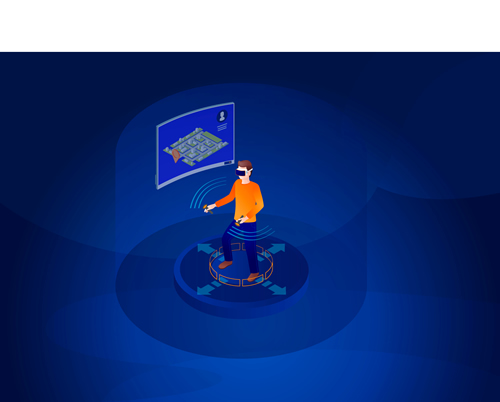Coding is one of the most crowded categories in edtech. And while there are a ton of great tools for students of any ability level, many of these tools have hit on the same formula. So whether you’re prepping for Hour of Code or looking to launch a coding unit or curriculum in your classroom, lab, or library, it’s tough to find the right solution or even determine what separates one from another. Thankfully, there are a few developers out there breaking the mold and doing something different.
These developers are not just iterating on the tried-and-true coding formula but exploring new frontiers that offer students new ways to learn—from VR and hardware hacking to on-the-go learning to courses and curriculum that blend technical skills with “soft” skills.
Hardware hacking: Pi-Top and Piper
Computer scientists and software engineers know it’s important for coders to have an understanding of how computers are made and how they work. Knowing a bit about the hardware side of things helps inform a programmer’s understanding of why code works the way it does. As someone who likes to build his own computers, I can also say it’s just flat-out fun to put together a PC and swap in and out components. It’s like the nerdier version of hot rodding.
Pi-Top and Piper both understand this, too, and have platforms that allow students—much like a littleBits kit—to assemble and modify modular computers that can then be used as coding platforms. On the coding side of things, Pi-Top has it own stylish game (CEED) students can use to learn about the basics of code, and Piper integrates with Minecraft.
Realistic, cross-disciplinary game design: Zulama
A lot of tools out there simplify game design, offering approximations of real-life coding that make it easier for kids to jump in and make something quickly. There are also pro-level tools such as GameMaker Studio that some enterprising teachers have adapted for student use. However, the real work of game design isn’t only coding games but conceptualizing them, building them, testing them, and marketing them. This is a process that requires more than technical skills, from storytelling to business to so-called soft skills such as collaboration.
Zulama—based on the successful college-level game design and development curriculum at Carnegie Mellon’s Entertainment Technology Center—effectively combines all these diverse skills into a truly comprehensive curriculum. Courses range in length and focus (from 3D modeling to the history of North American play and gaming), but all feature discussions, true PBL, assessments, and online and offline activities. Don’t worry if all this seems intimidating: There are PD resources that promise to get any teacher up to speed.
On-the-go learning: Grasshopper
Thanks to Duolingo and a host of competitors, on-the-go language learning has been a huge hit in the app market. But what if you want to learn some JavaScript alongside brushing up on your French? Well, that’s where Grasshopper comes in. It’s a free app that takes the same bite-sized, mobile-friendly learning model refined in the language-learning market and applies it to acquiring actual coding skills.
And according to our reviewer James Denby, they hit it out of the park: “Grasshopper is one of the best learn-to-code apps out there. Rather than playing games that involve coding concepts or code-like blocks, students will work with blocks of real JavaScript code (with the real syntax, punctuation, etc.) to solve clearly designed and interesting challenges. Quizzes along the way reinforce and highlight a conceptual understanding of items like variables, loops, and arrays. Unlike with many apps, students using Grasshopper won’t just learn about these concepts but will get to see them in use with real code. Grasshopper is also quite extensive and will take students quite far in their understanding of how JavaScript works.”
Virtual reality storytelling: CoSpaces
CoSpaces is only the second developer (zSpace being the other) I’ve seen working on how to turn students from virtual reality (VR) consumers into VR creators. Of course, consumer-facing products such as Minecraft or Tilt Brush can be adapted for classroom use, but CoSpaces is launching a classroom-specific solution, CoSpaces Edu. They’ve built an interesting platform that effectively turns VR into a creative platform for student expression—from telling stories to modeling environments to exhibiting work.
For students and teachers who want to add depth to the experience, there’s also support for scripting using either Blockly (beginner) or JavaScript (advanced). Using one of these languages, students can model and animate objects, adding an extra layer of learning to the engaging experience of VR creation.
![]() [Editor’s note: This post originally appeared on Common Sense Education.]
[Editor’s note: This post originally appeared on Common Sense Education.]
- High school students say AI will change the workforce - April 18, 2024
- Motivating students using the Self-Determination Theory - April 17, 2024
- Michigan Virtual’s statewide workgroup releasing AI guidance for K-12 educators - April 17, 2024


